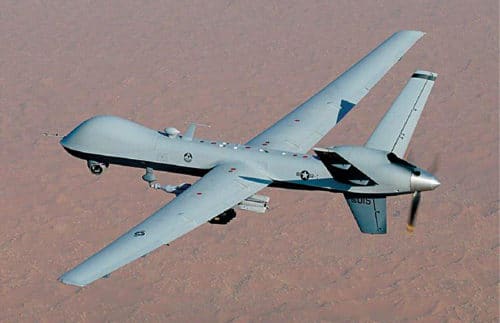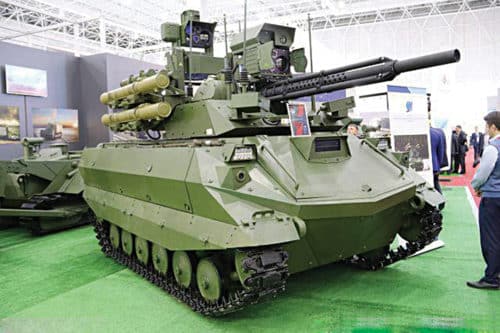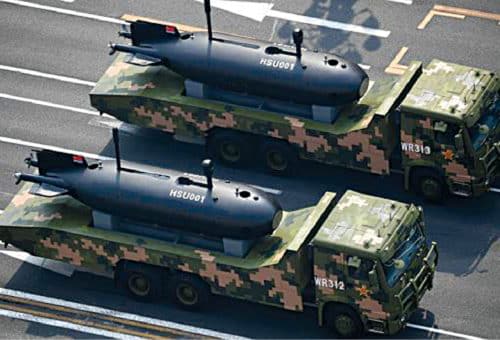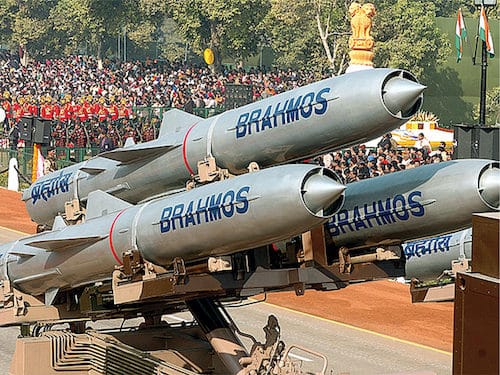With the use of artificial intelligence (AI) technology, modern electronics warfare has become more intelligent, effective, and precise in many ways. Leveraging AI technology in warfare equipment gives more advantages in the race towards modernisation of military equipment. This article covers the use of AI in military applications and on-going modernisation of Indian warfare equipment.
A recently published book, Army of None, authored by Paul Scharre, talks about autonomous weapons, artificial intelligence (AI), and cutting-edge technology in modern warfare. Experts think that in future, wars will be fought by AI-based autonomous machines. However, it’s difficult to predict whether humans will still be in charge of the deadly machines.

Looking back at the history of warfare revolutions, modern warfare is unique, lethal, and much more destructive than ever. You may refer the ‘AI In Defence: The Warfare Revolution 3.0’ article published in EFY July 2019 issue, which talks about various warfare revolutions in the history of mankind.
Modern warfare is part of the third revolution that uses drones, unmanned aerial vehicles (UAVs), and AI. With the use of AI technology, modern electronics warfare is becoming more intelligent, effective, and precise in many ways. The recent killing of Iranian major general Qasem Soleimani near Baghdad International Airport by a US drone in January this year was an example of the preciseness and effectiveness of a drone and also an eye-opener. According to some news, the world’s most feared drone, MQ-9 Reaper, had killed Soleimani. The recent tension between the US and Iran has witnessed the use of many deadly drones in the Middle East.
Every country has its own secret planning and strategy to modernise warfare equipment in the airspace, ground, and sea. Leveraging AI technology in warfare equipment gives greater advantage in the race towards modernisation of military equipment. All the autonomous machines have some form of AI and other sophisticated technologies involved.
This is why an autonomous drone is one of the most advanced and secret projects of the defence department in many countries.
This article covers the use of AI in military applications, including skies, lands and seas, and on-going modernisation of Indian warfare equipment.
AI in sky
Skyborg drone, originally designed as a flying AI machine, is now envisioned as a combat aerial vehicle having the capability to carry out dangerous missions, including hunting down or jamming enemy air defence networks, reconnaissance missions, or striking targets in heavily defended airspace. Earlier, Skyborg was meant to operate either together with a piloted fighter, providing assistance to a human pilot, or as an AI flying machine on autonomous mode. AI-powered Skyborg drones are likely to be put into use by 2023.

XQ-58 Valkyrie drone can fly at a high subsonic speed and take off without a runway. It is a stealthy drone designed and built by Kratos Defence & Security Solutions for the US Air Force. It has been designed to perform and operate as a fighter jet. Further, the air force is exploring to use F-35 and F-15EX fighter jets together with the Valkyrie drone.
MQ-9 Reaper, developed by General Atomics Aeronautical Systems, is the first hunter-killer UAV designed for long-endurance and high-altitude surveillance. It is also called Predator B, capable of being remotely controlled or autonomous flight operations, primarily for the US Air Force. It has a range of 1,850km and an operational altitude of 15km, which makes it useful for long-term loitering operations for both surveillance and support of ground troops. The Reaper has been sold to many countries, including the UK, France, and Australia.
AI on ground
Some countries are replacing foot soldiers on the ground with intelligent robots, allowing them to engage with enemies without putting human lives at risk. Robot tanks, vehicles, and sentries are being developed to replace human soldiers.

For example, the Uran-9 robot is an unmanned combat ground vehicle (UCGV) developed and produced by the Russian Defence company, UPTK. The robot is especially designed to deliver combined combat, reconnaissance, and counter-terrorism units with remote reconnaissance and fire support. It can be used autonomously on predefined paths or manually operated on roads.
The robotic system is equipped with a wide range of remote-controlled sensor modules such as laser warning systems and electro-optic and thermal imaging cameras. The onboard fire control system consists of automatic target detection, identification, and tracking devices as well as ballistic computers. It is capable of detecting and tracking enemy targets at a distance up to 6km during day and 3km at night. The Uran-9 robotic armed vehicle was inducted in January 2019.
SGR-A1, an AI-based sentry gun, is a stationary lethal autonomous weapons system (LAWS). South Korea is using these sentry guns for years along the heavily defended border with North Korea. They are placed at a fixed location to watch and respond to possible threats. These were developed in 2006 and reportedly deployed in 2010 along the demilitarised zone.
A similar system, developed by DoMAAM Super aEgis II, was also unveiled in 2010. It can detect humans at a distance up to 3km during day and 2.2km at night. It is normally equipped with a 12.7mm caliber standard gun.
AI in sea
Robots and AI are not only used for research in the deep sea but also for defence applications.
The US defence research agency DARPA has developed an unmanned submarine tracking vessel called Sea Hunter. It has been built with many electronic sensors, image-processing hardware, and software. It can be armed and used for anti-submarine and counter-mine duties. This autonomous ship can travel thousands of miles for months without a human crew.
The Russian Poseidon is an autonomous, nuclear-powered, and nuclear-armed unmanned underwater vehicle under development by Rubin Design Bureau. It is capable of delivering both conventional and nuclear payloads. The Poseidon is a family of drones having multiple features and capabilities. It is an oceanic multipurpose system.
China is believed to have deployed many unmanned underwater vehicles (UUVs) and autonomous underwater vehicles (AUVs) in the South China Sea. The HSU001, one of its autonomous vehicles, was showcased during China’s 70th National Day in October last year.

Modernisation of Indian warfare equipment
The government of India has already initiated the process of preparing Indian defence forces in using AI and developing the technology within the country in order to modernise the defence equipment.
A fully indigenous Futuristic Infantry Combat Vehicle (FICV) is being developed by Ordnance Factory Board (OFB) and Defence Research Development Oranisation (DRDO) for use by the Indian Army. Most of the parts to be used in the production will be developed in India. It is expected to be ready within three to five years.
Kamorta-class corvettes with the Indian Navy, currently in service, are a class of anti-submarine warfare corvettes. These were the first anti-submarine warfare stealth corvettes to be built in India. INS Kavaratti corvette is one of the projects that recently completed sea trials and was delivered to the Indian Navy in February 2020.
The Indian Air Force’s (IAF) vision for 2020 includes plans to raise its inventory of fighter combat squadrons, acquire more advanced fighters, sophisticated defence systems, and smart long-range weapons. The IAF will receive forty upgraded Su-30MKIs capable of carrying the BrahMos cruise missile, possibly before 2020 end.
BrahMos is a medium-range ramjet supersonic cruise missile that can be launched from submarines, ships, aircraft, or land. It is described as the world’s fastest supersonic cruise missile with a high degree of precision and accuracy. It can be used by Indian Army, Navy, and Air Force.

Ghatak, an unmanned combat air vehicle (UCAV) and, Rustom, an unmanned air vehicle (UAV), are under development by DRDO. India is also likely to purchase thirty Reaper drones from the US State Department.






